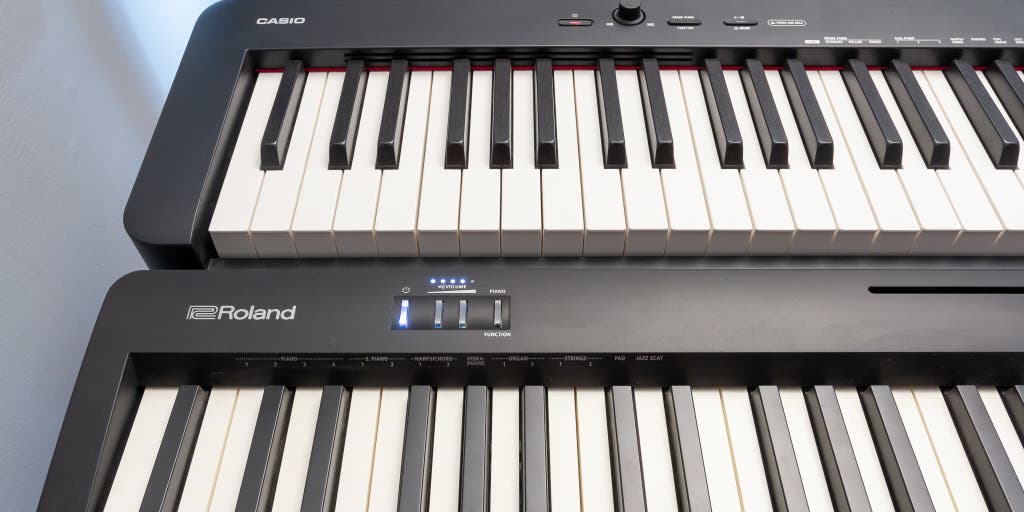1. Introduction
The 88-key weighted action digital piano is a modern version of the classic acoustic piano. It combines the sound and feel of an acoustic piano with the convenience and versatility of digital technology. With its weighted keys and realistic sound, this type of piano can be used in a variety of settings, from a professional studio to a home practice room. Whether you’re a beginner or a seasoned musician, there’s an 88-key weighted action digital piano for you.
2. Benefits of 88-Key Weighted Action Digital Piano
One of the main benefits of owning an 88-key weighted action digital piano is that it provides players with the same feel as an acoustic piano, but with more versatility and convenience. The keys have a heavier weight than those found on most keyboards, so they respond better to your touch and give you more control over your performance. Additionally, these pianos are equipped with features such as MIDI connectivity and built-in speakers that allow you to record or play back music without having to buy additional equipment.
3. Different Types of 88-Key Weighted Action Digital Pianos
There are several different types of 88-key weighted action digital pianos available on the market today. Portable models are great for those who need to move their instrument around frequently, while console models offer more features and are ideal for home use or professional recording studios. Digital grand pianos provide an even more realistic playing experience, while upright pianos offer a classic look that can fit into any décor.
4. Tips for Choosing the Right 88-Key Weighted Action Digital Piano
When shopping for an 88-key weighted action digital piano, it’s important to consider your budget and skill level before making a purchase. Beginners may want to opt for an entry-level model that offers basic features at an affordable price point, while experienced musicians may want to invest in a higher end model with more advanced features such as built-in effects and recording capabilities. Additionally, it’s important to make sure that the model you choose has enough polyphony (the number of notes that can be played simultaneously) for your needs; otherwise you may find yourself limited by its capabilities as your skills improve over time.
5. Features to Look for When Buying an 88-Key Weighted Action Digital Piano
There are several key features to look out for when buying an 88-key weighted action digital piano:
-Weighted keys: The heavier weight allows players to have greater control over their performance; some models also feature graded hammer action which mimics the feel of playing on an acoustic grand piano even further
-Polyphony: The number of notes that can be played simultaneously should be high enough for your needs; many mid range models offer 64 notes while higher end models offer up to 128
-Connectivity: Look out for USB ports which allow you to connect your instrument directly to computers or other devices
-Built in speakers: This feature allows you to play back music without having to buy additional equipment
-Touch sensitivity: This feature allows players to adjust their playing style based on how hard they press down on each key
6 Popular Brands and Models of 88-Key Weighted Action Digital Pianos
There are many popular brands and models available on the market today; here are just some examples:
-Yamaha P125B – A popular entry level model featuring Graded Hammer Standard (GHS) keyboard action and 64 note polyphony
-Roland RD800 – A mid range model featuring Roland’s Progressive Hammer Action (PHA) keyboard technology and 128 note polyphony
-Kawai MP11SE – A high end model featuring Kawai’s Responsive Hammer III keyboard technology with 256 note polyphony
7 Pros and Cons of 88-Key Weighted Action Digital Pianos
Like any instrument, there are both pros and cons associated with owning an 88-key weighted action digital piano:
Pros:
• Realistic sound & feel compared to acoustic pianos
• Versatile & convenient – allows players access to thousands of sounds & effects without needing additional equipment
• Easier storage & transportation than traditional acoustic pianos
Cons:
• More expensive than regular keyboards/synthesizers • May require additional software/hardware depending on desired functionality • Not as suitable as regular keyboards/synthesizers when it comes creating electronic music
8 Conclusion
An 88-key weighted action digital piano is perfect for those looking for a realistic playing experience in either home or professional settings. With its heavier keys and access to thousands of sounds & effects via MIDI connectivity & built in speakers, this type of instrument offers players more control over their performance than regular keyboards/synthesizers do at similar price points – making them ideal choices for both beginners & experienced musicians alike!
9 FAQs about 88-Key Weighted Action Digital Pianos
>Q1: What is the difference between regular keyboards/synthesizers & weighted action digital pianos? A1: Regular keyboards/synthesizers typically have lighter keys which don’t respond well when playing complex pieces requiring precise finger movements; whereas weighted action digital pianos have heavier keys which provide greater accuracy & control over one’s performance due their increased resistance when pressed down upon! Q 2 : Are there any drawbacks associated with owning an 88 key weighted action digital piano? A 2 : While these instruments provide greater realism compared regular keyboards/synthesizers at similar price points they may require additional software/hardware depending on desired functionality; additionally they take up more space than regular keyboards/synthesizers do due their larger size!

